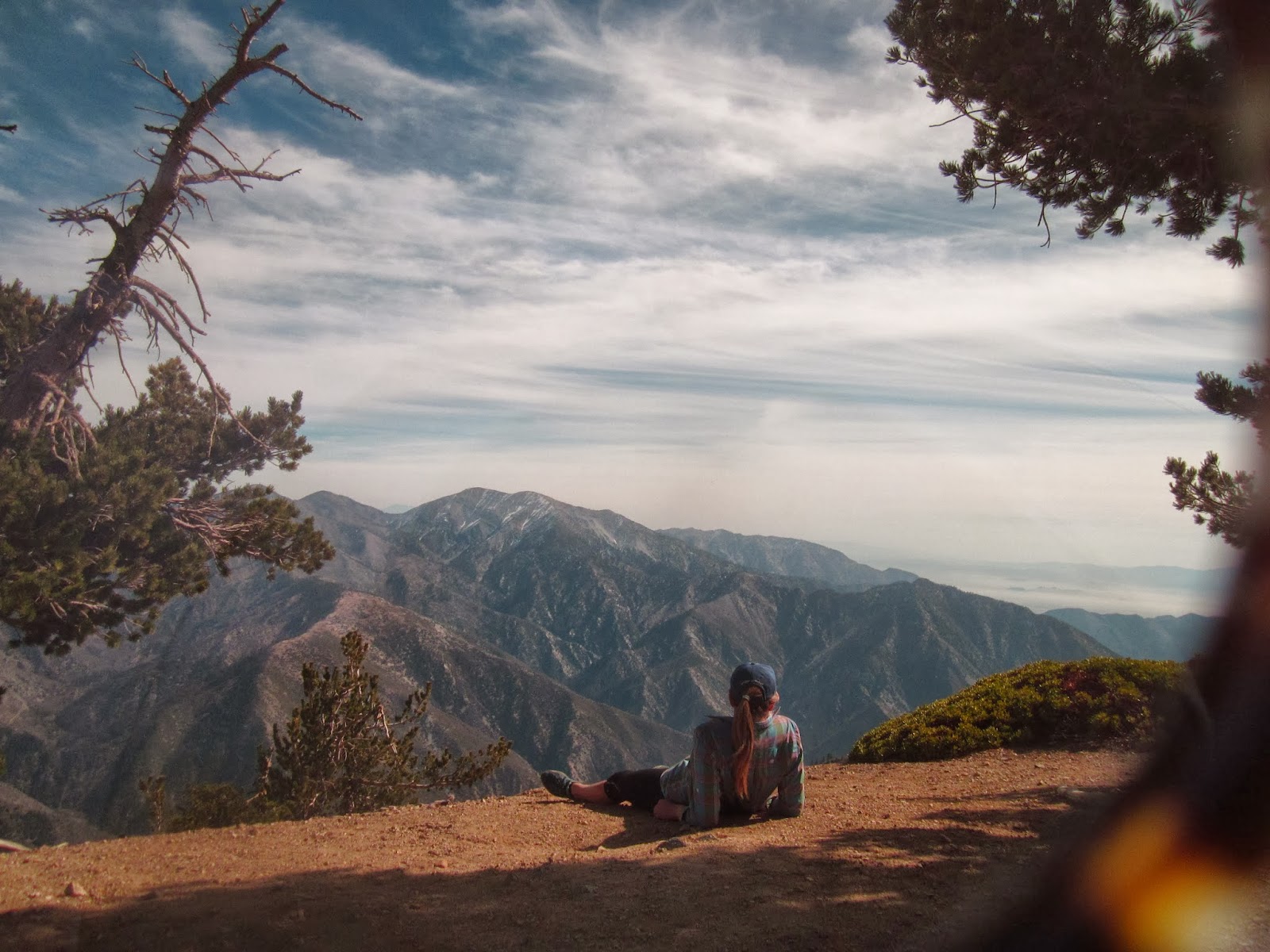We wanted a difficult walk, all day, views and something we had never done before. So we hiked to the summit of Mount Baden Powell from Crystal Lake Recreation Area. (Starting from Azusa, CA, take the HWY 39 directly north through winding roads until the road forks towards the Crystal Lake Rec Area. Park at the trail head located about 1/2 a mile above the Crystal Lake general store.)
We started late 8:30AM. Took the trail to Windy Gap and Mt Islip.
We witnessed a small herd of big horn sheep up. These Nelson Bighorn sheep are part of one of the only herds in existence. It is amazing that these delicate but healthy bighorn sheep live 25 miles from the largest, most smog polluted areas in the United States. More info about Bighorn in the San Gabriels in this Sheep Peepers article.
From Windy Gap, we walked east on the PCT, bagged Mount Hawkins, Middle Hawkins and Throop Peak on the way to Baden Powell.

Southeast views from Throop. Pictured is Iron Fork of the San Gabriel River, a place that is very seldom visited.
Kate taking a breather underneath the refreshing smell of Jeffery pines. Stick your nose in between the bark furrows and you'll smell butterscoth, vanilla and/or Christmas cookies.
Our first time on the summit of Throop. Reads...
"Amos G. Throop (1811-1894)
Founder of Throop University in 1891
Now known as California Institute of Technology
May 13, 1992"
One the top, I found a snack, Wax Currant (ribes cereum). It was freeze-dried and, actually, better tasting than fresh wax currants. Tasted of mild cherry and cranberry. Eat these puppies whole.
On the way down, and the remainder of the hike, I found more snacks, Bush Chinquapin (chrysolepis sempervirens), meaning "I have nuts that taste like toasted filberts, but they are surrounded by a sharp, sticky force field, so don't mess!"
These nuts use to be one of the many staple foods native north American tribes ate. Now they are enjoyed by the Clarks Nutcracker, among other birds, rodents and me.
Swipe or whack these spiny nuts off the branch with a good stick. Get them on a rock or hard surface. Hit them with your stick or stomp on them with your boot. A few nuts will be exposed. Eat them out of hand or toast them like sunflower seeds.
More views, looking towards the LA basin.
The exposure of Throop ridge. Walking beneath Limber pine and sierra lodgepole pines (Pinus contorta ssp. murrayana). These lodgepole pines are extremely old, from 200-500 years old, and are dying off due to prolonged drought. So go and see them before they are dead!
Happy to be in a rocky mountain fir forest.The north face of Throop ridge.
Top of Baden Powell. View of Mt Baldy and Iron Mtn.
In the shade of limber pines (pinus flexilis). Limber pine branches twist, turn and bend over years of harsh, high winds, making gnarled, sad looking trees. But Limber Pines here are nothing but sad. They stand for resilience, endurance, toleration, guts and glory. These are some of the oldest trees in the world, living up to 2,000 years old. The limber pines pictured are around 1,000 years old, so you feel very humbled to be under them.
We turned around to experience the whole hike again, but backwards!18 miles, ~5k elevation gains
Visit the San Gabriel high country. It is unlike any other mountain range in the west. With it's old trees, rare wildlife, fire thrashed forests, bone dry ridges, sketchy granite cliffs, rich (undocumented) history, gold rush prospects, trash heeps, wildflower gardens pristine cold springs, drunk drivers, weekly homicides, graffiti, pit-toilets, snow storms, observatory, boy scouts, high peaks and unforgettable experiences, the San Gabriel Mountains has something for everyone.
Go seen it all before it burns! Good luck. And thanks for reading.











No comments:
Post a Comment